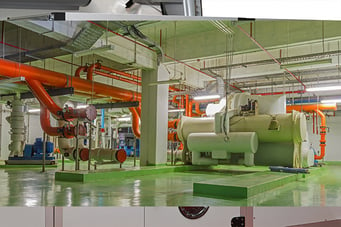For an average commercial building, up to a third of total electricity used is consumed by HVAC and refrigeration systems. Within those systems, chillers can be responsible for over 40% of that demand, resulting in 10-12% of overall electricity usage. As this equipment uses such a large amount of electricity, submetering opportunities for cost savings can have a quick return on investment.
Peak Demand Affects Chillers

Most often, chillers do not operate near their rated design performance. Generally, too few chillers are run at full capacity and additional ones are turned on when demand increases. However, as any large commercial or industrial buildings are billed on peak demand, adding supplementary chillers can dramatically increase a power bill. Measured in kW, peak demand is the highest instance of power use in a given time frame and typically represents a spike in power usage.
Chillers are most efficient when run between 30% and 50% of the loading mark. Facilities can implement several strategies to reduce power spikes and avoid steep utility bills:
- Load shedding
- Sequencing multiple chillers
- Gradually ramp up usage
Better Understand Energy Usage
The most effective way to monitor electricity consumption of chillers is to use power meters. With a power meter, facilities can access usage data more frequently than relying on the monthly bill. This data can be used to better implement power saving measures and thus reduces the risk of power usage spikes. Power meters can be integrated into existing building management systems and even small changes to behavior can noticeably improve chiller performance.
Setra's Power Meter comes standard with data logging capabilities, and with the web portal software, users can access that data for up to 62 days. Data analytics in the software can help guide decision making to use chillers most effectively. Multi-load monitoring equips facilities with the granularity necessary to manage usage at a load level and thereby drive energy savings.



